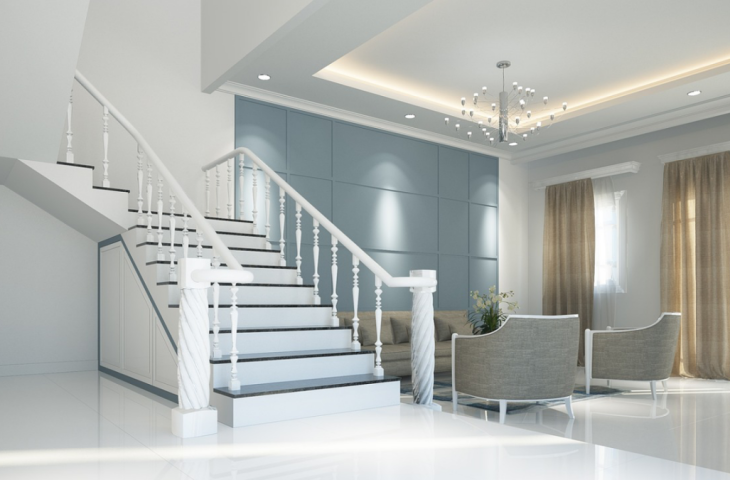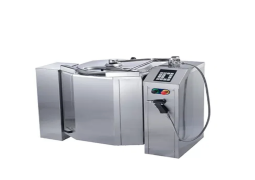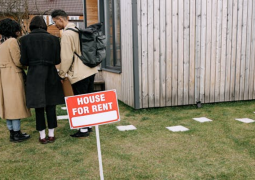Sustainable Living – Eco-Friendly Home Design Trends for 2025
by ago0

You may be wondering how to create a living space that not only reflects your style but also benefits the planet. As we approach 2025, eco-friendly home design trends are evolving to prioritize sustainability and efficiency without sacrificing aesthetics. This blog post will guide you through the latest innovations and practical ideas that can transform your home into an environmentally conscious sanctuary. By embracing these trends, you can contribute to a greener future while enjoying a beautiful and functional living environment.
The Importance of Sustainable Living
To embrace sustainable living is to actively participate in preserving our planet for future generations. By adopting eco-friendly practices, you contribute to a healthier environment, reduce waste, and promote biodiversity. Sustainable living aligns your lifestyle with values that prioritize not only your well-being but also the welfare of the Earth. In turn, this creates a ripple effect, inspiring your community to engage in similar habits that foster a more sustainable future.
Environmental Impact
On a global scale, sustainable living significantly reduces your carbon footprint. By making conscious decisions, such as using renewable energy sources, minimizing waste, and purchasing eco-friendly products, you help mitigate climate change and protect natural resources. This collective effort leads to cleaner air, water, and a more stable climate.
Economic Benefits
Impact your finances positively by understanding that sustainable living can lead to substantial savings. By choosing energy-efficient appliances, reducing consumption, and embracing a minimalist lifestyle, you can lower your utility bills and minimize expenses over time.
Also, investing in sustainable upgrades for your home not only generates immediate savings but can also increase its long-term value. Properties with features like solar panels, energy-efficient windows, and sustainable materials are often more desirable in the market, leading to potential increases in resale value. You are consciously making choices that benefit both your wallet and the planet, creating a win-win situation for you as a homeowner.
Key Eco-Friendly Home Design Trends for 2025
One of the most exciting aspects of home design in 2025 is the shift towards sustainable, eco-friendly practices that not only enhance your living space but also benefit the environment. These trends focus on reducing your carbon footprint and increasing energy efficiency, ensuring your home is a haven of sustainability. Discover how you can incorporate these innovative design elements into your own home and lead the way in eco-friendly living.
Use of Sustainable Materials
An important trend for 2025 is the use of sustainable materials in home construction and decor. You can opt for reclaimed wood, bamboo, or recycled metals and glass, which not only reduce waste but also add unique character to your space. These materials are durable and often require less energy to produce, making them a wise choice for both the planet and your home.
Smart Home Technology Integration
Smart home technology adoption is rapidly increasing, offering you newfound control over your energy usage and overall home efficiency. By integrating smart thermostats, energy monitoring systems, and automated lighting, you can significantly reduce your energy consumption while enjoying the convenience of modern living at The Robertson Opus.
Technology advancements in 2025 will allow you to seamlessly manage various aspects of your home via smartphone applications. For instance, smart sensors can detect when a room is occupied and adjust lighting accordingly, which not only saves energy but also elevates your home’s comfort level. Furthermore, smart irrigation systems can optimize water use for your gardens, ensuring your landscaping remains lush and eco-friendly. By embracing these technological innovations, you can create a more sustainable and efficient home environment.
Energy Efficiency Innovations
While the quest for sustainability intensifies, energy efficiency innovations are leading the way in eco-friendly home design for 2025. These advancements not only reduce environmental impact but also lower utility costs, allowing you to enjoy a more sustainable lifestyle. From smart technologies to innovative building materials, integrating these innovations into your home offers a practical approach to energy conservation at Lyndenwoods.
Advanced Insulation Techniques
Among the most significant advancements in energy efficiency are advanced insulation techniques. These methods ensure that your home retains heat in the winter and remains cool during the summer, leading to an overall reduction in energy consumption.
| Vacuum Insulation Panels (VIPs) Reflective and Radiant Barriers Spray Foam Insulation Cellulose Insulation | High R-Value Ratings Improved Air Sealing Moisture Control Natural and Recycled Materials |
Renewable Energy Sources
Energy harnessed from renewable sources is becoming increasingly accessible and vital for sustainable living. By incorporating systems that utilize solar, wind, or geothermal energy into your home, you not only decrease your reliance on fossil fuels but also create a self-sustaining energy environment.
To enhance your home’s energy profile, consider investing in solar panel installations, which convert sunlight directly into electricity. Wind turbines can also be a remarkable option if you have the space and appropriate conditions. Additionally, geothermal heating and cooling systems utilize the consistent temperature of the earth to provide an efficient climate control solution. By utilizing these renewable energy sources, you will significantly improve your energy efficiency while contributing to a greener planet.
Water Conservation Strategies
Not only is water conservation vital for sustainable living, but it also helps you reduce your utility bills significantly. As awareness about water scarcity grows, incorporating effective conservation strategies in your home design can lead to a more eco-friendly lifestyle. Embracing innovative techniques allows you to minimize water waste, ensuring a sustainable future for both you and the environment.
Rainwater Harvesting Systems
Conservation of water can be achieved through rainwater harvesting systems that capture and store rain for various uses. By installing a rain barrel or a more comprehensive collection system, you can harness the power of nature to irrigate your garden, wash your car, or even supply your home with water for non-potable uses. This approach not only relieves pressure on municipal water supplies but also lowers your utility bills.
Low-Flow Fixtures
Between faucets, showerheads, and toilets, low-flow fixtures significantly reduce water usage without compromising performance. By choosing these modern fixtures for your home, you enable substantial savings on both water and energy consumption, positively impacting your environmental footprint. This simple upgrade benefits your household and works towards a sustainable future.
Further enhancing your commitment to water conservation, low-flow fixtures utilize advanced technology to minimize water flow while maintaining the necessary pressure for functionality. From aerated taps to dual-flush toilets, these fixtures can save thousands of gallons of water annually. By integrating these efficient designs into your home, you not only protect this precious resource, but also encourage others to follow suit, fostering a community-wide shift towards sustainable practices.
Biophilic Design Principles
Once again, biophilic design principles are poised to transform your living space by fostering a deeper connection with nature. This approach emphasizes incorporating natural elements into your home, creating an environment that promotes well-being, reduces stress, and enhances your overall quality of life. By prioritizing natural materials, organic shapes, and greenery, you can seamlessly integrate the beauty of the outdoors into your indoor environment, ensuring a harmonious balance between comfort and nature.
Indoor Plant Integration
Biophilic design encourages you to elevate your home through indoor plant integration. By incorporating various plants into your decor, you enhance air quality and create a refreshing atmosphere. Consider selecting species that thrive indoors and complement your aesthetics, transforming your space into a vibrant haven. The presence of greenery not only boosts your mood but also instills a sense of tranquility, making your home feel more alive and connected to nature.
Natural Lighting Solutions
Solutions that maximize natural lighting can significantly enhance your living environment. By strategically positioning windows and using reflective surfaces, you can invite abundant daylight into your home, reducing reliance on artificial lighting. This approach not only saves energy but also creates a more inviting and uplifting atmosphere, enhancing your overall experience in your space.
Another effective method for optimizing natural light is to integrate skylights and larger window openings into your design. Not only do these features allow sunlight to flood your interiors, but they also provide breathtaking views of the sky and surroundings. Using sheer curtains or light-filtering shades can further maintain privacy without sacrificing illumination, allowing you to enjoy an airy, spacious feel while connecting you to the ever-changing natural light throughout the day.
Sustainable Landscaping Practices
Despite the challenges of achieving a sustainable landscape, implementing eco-friendly practices can create a thriving environment. By focusing on water conservation, soil health, and biodiversity, you can design a landscape that not only looks beautiful but also complements the local ecosystem. Utilizing sustainable landscaping practices ensures that your outdoor spaces are both functional and resilient, contributing positively to the environment.
Native Plant Selection
Before selecting plants for your landscape, consider incorporating native species that thrive in your local climate. Native plants require less water and minimal maintenance, promoting biodiversity and attracting local wildlife. By choosing these plants, you not only reduce your environmental footprint but also create a beautiful and vibrant garden that integrates seamlessly with the natural surroundings.
Permaculture Concepts
Across sustainable landscaping practices, permaculture principles stand out as a holistic approach to gardening and land use design. By mimicking natural ecosystems, you can create a self-sustaining environment that fosters resilience and minimizes resource input. Techniques such as companion planting, crop rotation, and natural pest management can enhance your landscape’s productivity while promoting biodiversity and soil health.
Indeed, embracing permaculture concepts allows you to transform your yard into a truly sustainable ecosystem. By designing layouts that incorporate elements such as swales for water management, food forests, or garden beds that support interplanting, you can enhance your outdoor space’s functionality. Additionally, integrating composting systems and rainwater harvesting can significantly reduce waste, nourishes your plants, and promotes a healthy environment. This comprehensive approach not only benefits your garden but also contributes positively to your local ecosystem, making your home more eco-friendly in the process.
Conclusion
With these considerations, you can embrace the future of sustainable living by integrating eco-friendly home design trends into your space. By selecting renewable materials, maximizing energy efficiency, and enhancing indoor air quality, you not only contribute to a healthier planet but also create a more comfortable living environment for yourself and your loved ones. As you explore the innovative solutions available, you’ll find that each choice you make can lead to a more sustainable and mindful lifestyle in 2025 and beyond.



